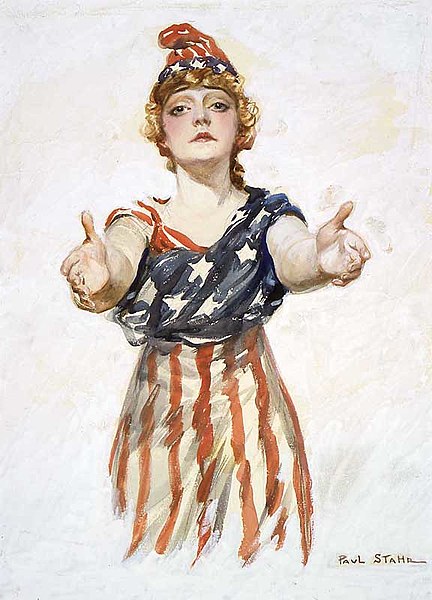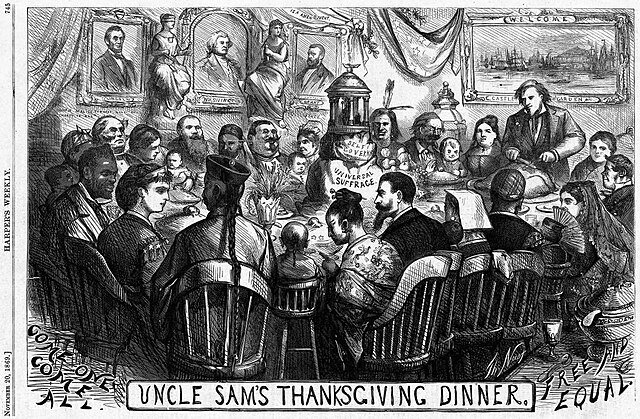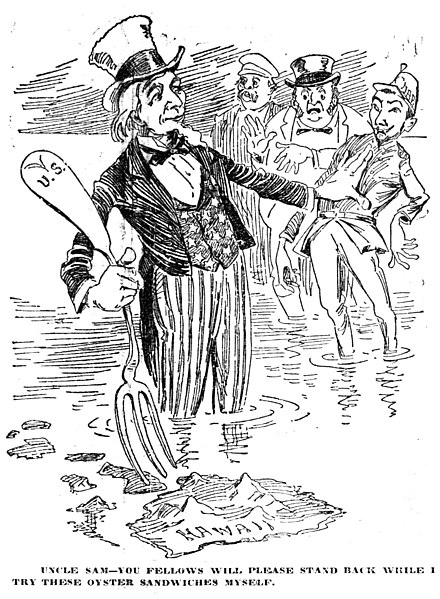Uncle Sam is a common national personification of the federal government of the United States or the country in general. Since the early 19th century, Uncle Sam has been a popular symbol of the U.S. government in American culture and a manifestation of patriotic emotion. Uncle Sam has also developed notoriety for his appearance in military propaganda, popularized by a famous 1917 World War I recruiting poster by J. M. Flagg.
J. M. Flagg's 1917 poster was based on the original British Lord Kitchener poster of three years earlier. It was used to recruit soldiers for both World War I and World War II into the US Army. Flagg used a modified version of his own face for Uncle Sam, and veteran Walter Botts provided the pose.
Columbia, a female personification of the US, by American illustrator Paul Stahr
Uncle Sam and Columbia in an 1869 cartoon by Thomas Nast
Uncle Sam often personified the United States in political cartoons, such as this one in 1897 about the U.S. annexation of Hawaii.
A national personification is an anthropomorphic personification of a state or the people(s) it inhabits. It may appear in political cartoons and propaganda.
Britannia arm-in-arm with Uncle Sam symbolizes the British-American alliance in World War I. The two animals, the Bald eagle and the Barbary lion, are also national personifications of the two countries.
The Liberty of Oudiné in memory of the Argentine centenary of the May Revolution (1810-1910).
An early example of national personification in a gospel book dated 990: Sclavinia, Germania, Gallia, and Roma, bringing offerings to Emperor Otto III.
Italia und Germania (1828) by Johann Friedrich Overbeck.








